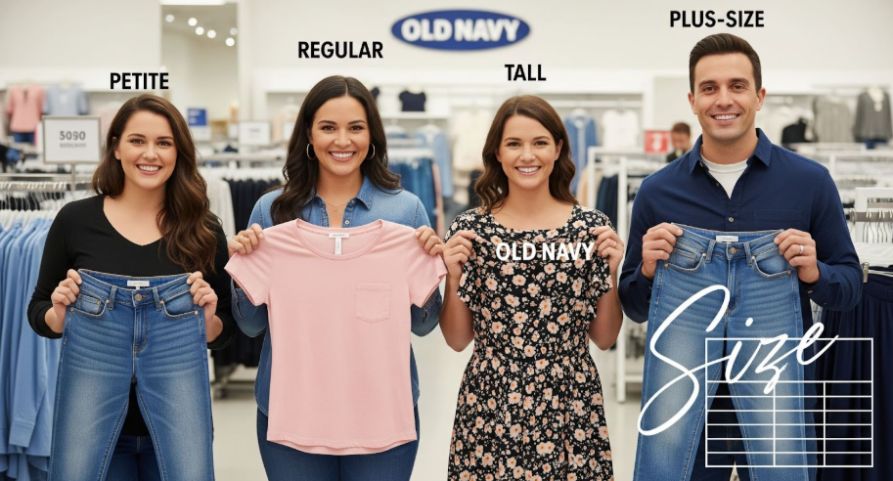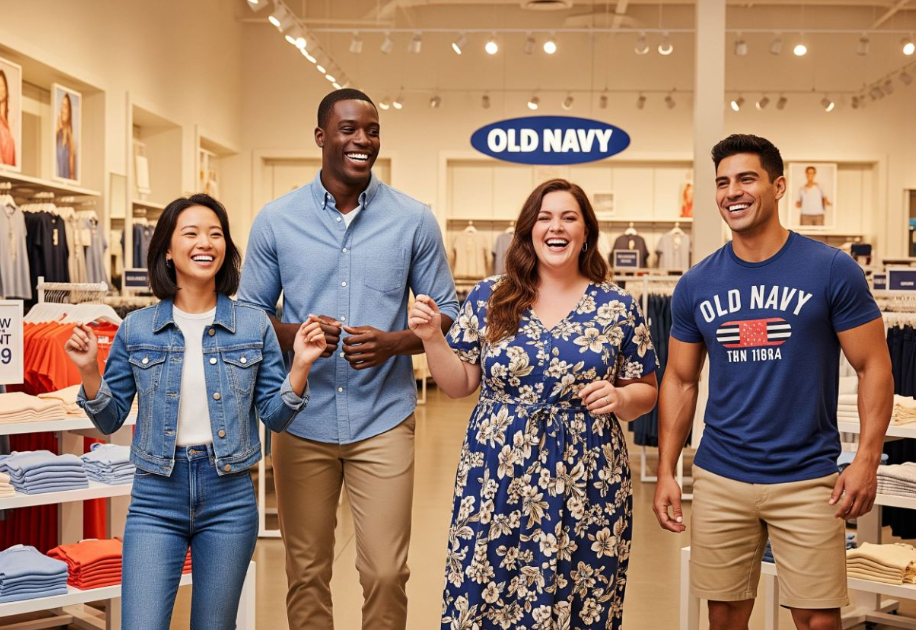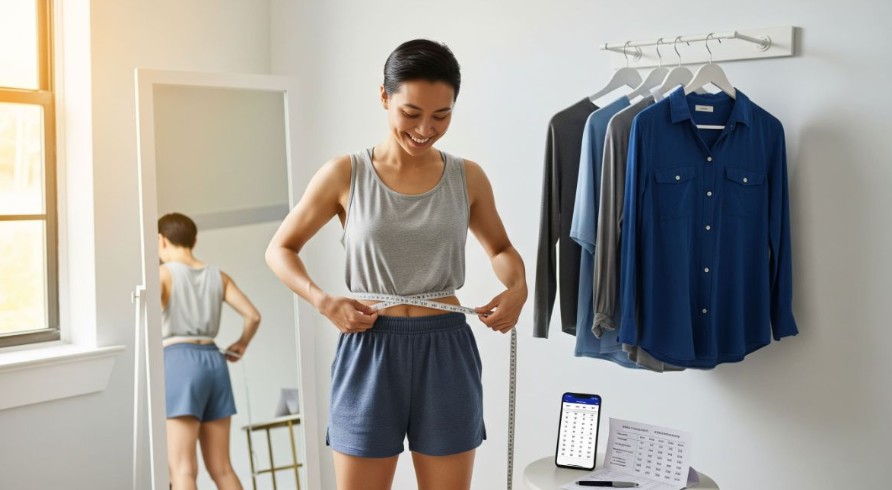
I once tried on a jumpsuit at Old Navy that looked adorable on the hanger. On me? Not so much.
The top half fits like a dream. The bottom? Let’s just say there was a lot of dramatic hopping involved in the fitting room.
That was my wake-up call. Guessing my “medium-ish” size just wasn’t cutting it anymore. Using a universal clothing size guide became less of a suggestion and more of a survival tactic.
Since then, I’ve made peace with measurements. And honestly? Shopping is a whole lot less stressful now.
Why Old Navy’s Sizing Actually Works for Real Bodies
One thing I appreciate about Old Navy is how inclusive their sizing really is.
Their size chart breaks everything down clearly—bust, waist, hips, inseam—you name it. But what makes it stand out is how they offer options for petite, tall, plus, maternity, and even slim or husky fits for kids.
Even better? The price stays the same no matter what size you buy. That’s not just refreshing—it’s rare.
Not All Mediums Are Created Equal

You know the drill: you’re a size 6 in one brand and a 10 in another. That’s because every label has its own fit language.
Old Navy tends to run a bit generously—especially in relaxed-fit styles. So if you’re between sizes, consider sizing down. But don’t just guess—check the chart first.
Here’s a quick comparison for reference:
| Brand | General Fit | Compared to Old Navy |
| H&M | Runs small | Old Navy tends to be roomier |
| American Eagle | True to size | Very similar fit |
| Zara | Hit or miss | Old Navy offers more consistency |
| Target (Universal Thread) | Varies | Old Navy is generally more predictable |
Does the Size Chart Work for Kids?
Absolutely. Especially if your kid doesn’t fit the so-called “standard” mold.
Old Navy offers slim and plus fits for girls and husky sizes for boys. And instead of guessing by age, you can actually size by height and weight.
If your kid is in mid-growth-spurt mode, always size up. They’ll outgrow that tee before your Amazon box even hits the porch.
How It Fits: Petite, Tall, and Plus Options

Here’s where the Old Navy really shines.
Their petite line isn’t just shorter—it’s proportioned right. No more hemming jeans or rolling sleeves like you’re in a 90s sitcom.
The tall sizing adds length in the inseams and sleeves without making everything look oversized.
And the plus-size line? It’s not just scaled-up basics. The designs actually flatter curvier shapes. The cuts and fit feel intentional—because they are.
If You’re Not Measuring, You’re Just Guessing
Before adding anything to your cart—online or in-store—grab a tape measure.
Measure your bust, waist, and hips. Jot the numbers down or keep them on your phone. Then match them to the Old Navy size chart, which is posted on every product page.
In-store? Snap a photo of the size chart near the fitting rooms. It’ll save you from trying on five different sizes “just in case.”
Pay close attention to the product’s fit description, too. Words like “relaxed,” “snug,” or “oversized” aren’t just fluff—they’re serious clues.
No More Dressing Room Drama

Raise your hand if you’ve ever ordered three sizes of the same shirt hoping one would work. Yep—same.
Here’s what finally changed that for me:
First, I took my measurements. Then I actually used the chart (radical, I know). And finally, I stopped assuming that all jeans are created equal.
Different fabrics, cuts, and rises make a huge difference. A high-rise jegging is going to fit very differently than a mid-rise boyfriend jean. Reading the product notes? Always worth it.
Fit FAQs—Because Everyone Has Questions
Q: Why do jeans fit differently even if they’re the same size?
Because fit depends on more than just the number. Fabric, stretch, rise, and even wash can affect sizing. Always check the product description and reviews.
Q: Can I stick with my regular size for maternity clothes?
Yes! Old Navy’s maternity line is built around your pre-pregnancy size. There’s extra room in all the right places, so you can stay comfy without sizing up—unless you want a looser fit.
Q: What if I’m between two sizes on the chart?
Think about the material. If it stretches, size down. If it’s stiff or you want a layered look, size up. Reading customer reviews helps a ton—especially from people with a similar build.
Q: Are men’s and women’s size charts the same?
Nope. Men’s sizing uses waist and inseam in inches. Women’s sizing is typically numeric. Use the chart that matches the gender section you’re shopping in for the best results
The Chart That Changed My Closet
I used to dread the fitting room. Now? I show up with measurements, confidence, and way fewer returns.
The Old Navy size chart isn’t magic—but it gets you about 90% of the way to a perfect fit. The rest comes down to knowing what cuts flatter you and being flexible with size numbers.
Because let’s be real—the number on the tag doesn’t matter. How you feel in the outfit does.
So next time you’re shopping, whether in-store or online, bring the tape, bring the chart, and most importantly—bring that main character energy.



